Transforming Waste into Wealth: Crafting a Compost Bin for Sustainable Living
Embark on a journey of sustainable living by crafting your own compost bin. Discover how to transform food scraps and yard waste into nutrient-rich compost, enriching your garden and reducing your carbon footprint.
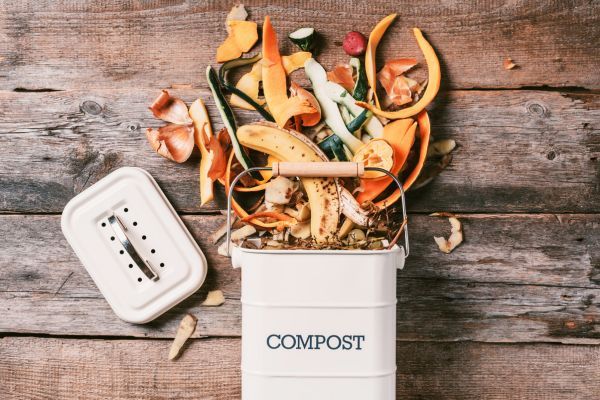
Imagine a world where our discarded food scraps and yard waste aren't just tossed into landfills, but transformed into something truly valuable. Picture nutrient-rich compost, teeming with life, nourishing our gardens and enriching our soil. This transformation is not just a dream; it's a reality that you can make a part of your own life.
In today's world, where environmental consciousness is paramount, composting stands as a beacon of sustainability. It's a simple yet powerful act that allows us to reduce our carbon footprint, minimize waste, and enhance the health of our planet.
By embracing composting, we embark on a journey of sustainable living, not just for ourselves, but for generations to come. We become active participants in a cycle of renewal, where waste becomes wealth, and the earth is nurtured.
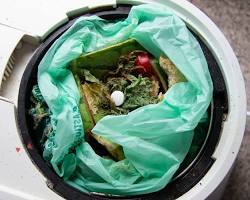
As you delve into this guide, you'll discover the magic of composting, from its environmental benefits to its practical applications. You'll learn how to construct your own compost bin, transforming your waste into a valuable resource. And you'll gain insights into the art of composting, ensuring that your efforts yield the richest, most beneficial compost.
The Benefits of Composting
As you embark on your composting journey, it's crucial to understand the profound benefits that this practice offers. Composting is not just about transforming waste; it's about nurturing our planet, enriching our gardens, and embracing a more sustainable lifestyle.
Environmental Benefits:
Composting plays a pivotal role in reducing our environmental impact. By diverting organic waste from landfills, we minimize the production of methane, a potent greenhouse gas that contributes significantly to climate change. Moreover, composting conserves valuable landfill space, preventing the contamination of soil and water resources.

Economic Advantages:
Composting offers substantial economic benefits as well. By producing nutrient-rich compost, you can reduce your reliance on expensive commercial fertilizers and soil amendments. This homemade compost not only enriches your garden but also saves you money in the long run.
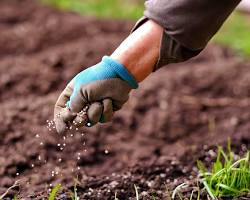
Enhanced Soil Health:
Compost is a soil conditioner extraordinaire. It improves soil structure, aeration, and water retention, creating an environment where plants thrive. The organic matter in compost attracts beneficial microorganisms that further enhance soil health, leading to healthier plants and bountiful harvests.
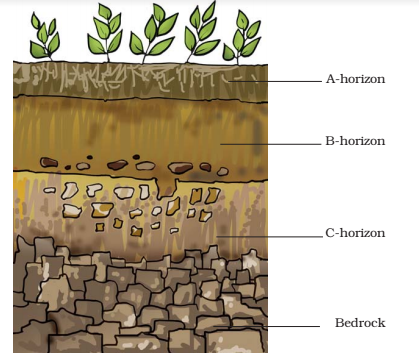
In addition to these primary benefits, composting also contributes to:
- Reduced Erosion: Compost binds soil particles together, minimizing erosion caused by wind and water.
- Improved Stormwater Management: Compost enhances soil infiltration, reducing runoff and improving stormwater management.
- Suppression of Plant Diseases: The beneficial microorganisms in compost can suppress plant diseases and pests, reducing the need for chemical pesticides.
- Carbon Sequestration: Composting traps carbon in the soil, mitigating the effects of climate change.
- Reduced Project Maintenance Costs: Compost can be used to restore contaminated soils and reduce project maintenance costs.
Designing Your Compost Bin
Your compost bin is the heart of your composting journey. It provides a controlled environment for organic waste to decompose and transform into nutrient-rich compost. When designing your compost bin, consider the following factors:
Type of Compost Bin:
There are several types of compost bins available, each with its own advantages and limitations. Open-air bins are the simplest and most economical option, while compost tumblers offer faster decomposition and less odor. Vermicomposting bins utilize worms to break down organic matter, producing a fine, nutrient-rich compost.

Space Constraints:
Consider the available space in your yard or garden when selecting a compost bin. Open-air bins typically require more space, while compost tumblers and vermicomposting bins are more compact. If space is limited, consider vertical composting options or in-ground compost bins.
Aeration and Drainage:
Aeration is essential for proper decomposition in a compost pile. Ensure that your compost bin has adequate ventilation to allow air to circulate and promote decomposition. Drainage is also important to prevent waterlogging and excessive moisture, which can hinder the composting process.
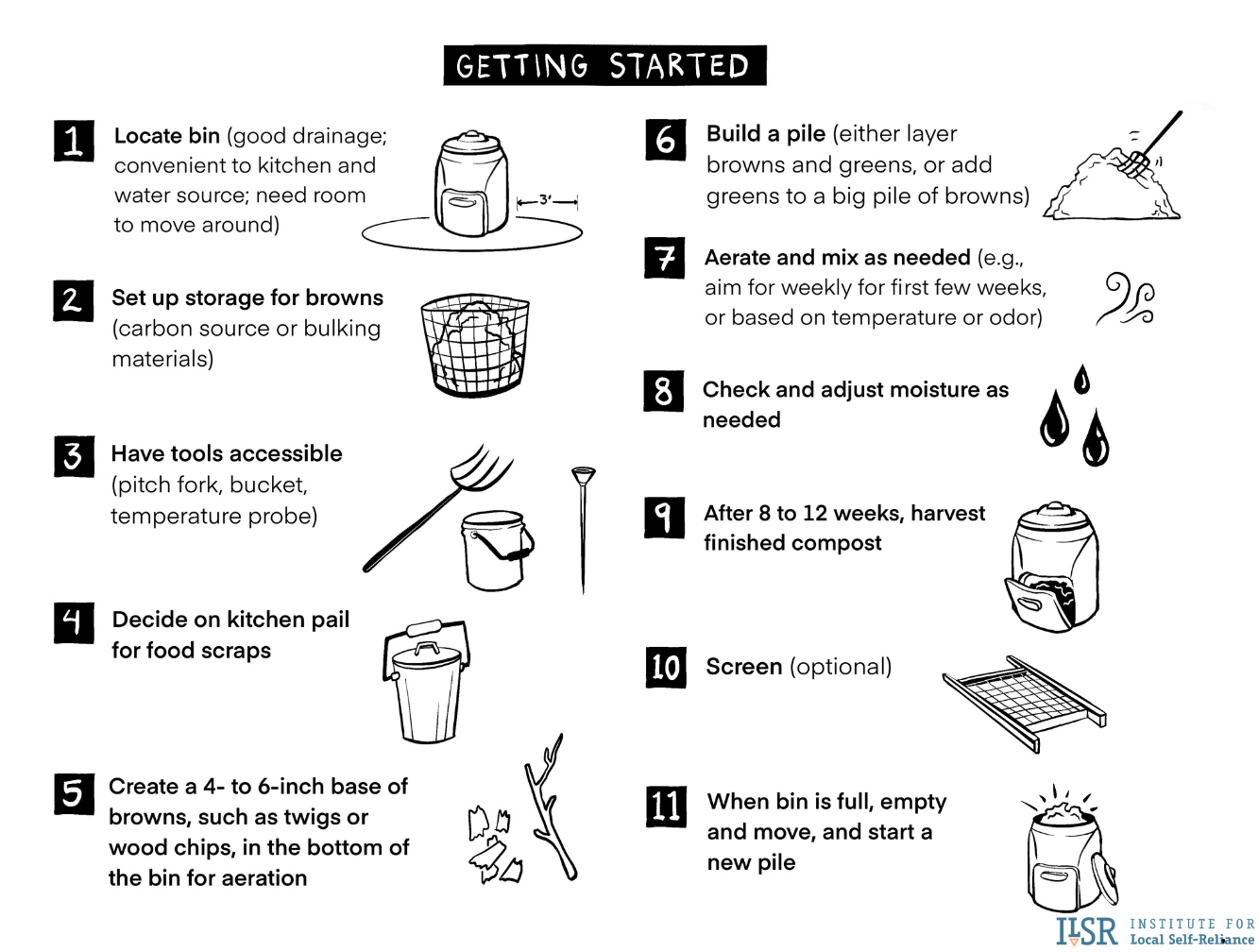
Accessibility:
Your compost bin should be easily accessible for adding waste and turning the compost pile. Choose a location that is convenient and allows you to access the bin regularly. If you have limited mobility, consider raised compost bins or compost tumblers that can be rotated without bending.
When selecting a compost bin, it's crucial to consider your individual needs, preferences, and available space. With careful consideration, you can choose the compost bin that best suits your composting style and ensures optimal decomposition.
Constructing Your Compost Bin:
With your compost bin design in mind, it's time to transform your plans into reality. Here's a step-by-step guide to constructing a simple and effective open-air compost bin using wooden pallets or wire mesh:
Gathering Materials:
Before embarking on the construction process, gather the necessary materials, including:
- Wooden Pallets: If using wooden pallets, select sturdy pallets that are free of chemicals or harmful substances.
- Wire Mesh: If using wire mesh, choose galvanized wire mesh with appropriate spacing to allow for aeration and drainage.
- Hardware: Gather screws, nails, or other fasteners to secure the pallets or wire mesh.
- Tools: Prepare tools such as a saw, hammer, drill, and screwdriver to facilitate construction.
Constructing the Bin Frame:
- Pallets: Stand three pallets upright, forming the back and sides of the bin. Secure the pallets together using screws or nails, ensuring the structure is sturdy.
- Wire Mesh: If using wire mesh, attach the mesh to posts or wooden frames to create the bin walls. Ensure the mesh is securely fastened and provides adequate ventilation.
Adding a Door:
- Cut a Half-Pallet: Cut a pallet in half, creating a door-shaped piece.
- Attach Hinges and Latches: Attach hinges to the top and bottom of the door and secure it to the bin frame. Install latches or hooks to keep the door closed.
Positioning and Placement:
- Level Surface: Choose a level surface for placing the compost bin to ensure proper drainage and stability.
- Shady Location: Opt for a shady location to prevent excessive drying and maintain optimal moisture levels in the compost pile.
- Accessibility: Position the bin in an accessible location for easy addition of waste and turning of the compost pile.
Composting Essentials
As you embark on your composting journey, it's essential to understand the fundamentals of this process to ensure successful decomposition and nutrient-rich compost production.
The Composting Process:
Composting is the natural breakdown of organic matter by microorganisms, including bacteria, fungi, and actinomycetes. These microorganisms break down complex organic compounds into simpler forms, releasing nutrients and generating heat. The composting process occurs in three distinct stages:
- Mesophilic Phase: In this initial stage, microorganisms actively break down organic matter, generating heat that raises the compost pile temperature to around 100°F to 130°F.
- Thermophilic Phase: As temperatures rise, thermophilic microorganisms, which thrive in high temperatures, take over the decomposition process. This stage lasts several weeks, resulting in a significant reduction of organic matter and the elimination of harmful pathogens.
- Cooling-Down Phase: As the compost pile cools down, thermophilic microorganisms become less active, and mesophilic microorganisms resume the decomposition process. This final stage refines the compost, producing a dark, crumbly material rich in nutrients.
Maintaining a Balanced Carbon-Nitrogen Ratio:
The carbon-nitrogen (C:N) ratio plays a crucial role in the composting process. Carbon provides energy for the microorganisms, while nitrogen is essential for their growth and reproduction. An ideal C:N ratio for composting is around 25:1 to 30:1.
- Carbon-Rich Materials: Carbon-rich materials, often referred to as "browns," include dry leaves, twigs, wood chips, and shredded paper. These materials provide the necessary energy for microorganisms.
- Nitrogen-Rich Materials: Nitrogen-rich materials, known as "greens," include food scraps, grass clippings, coffee grounds, and manure. These materials provide the nitrogen needed for microbial growth.
By balancing carbon-rich and nitrogen-rich materials, you ensure a healthy and efficient composting process. An imbalance can lead to slow decomposition, unpleasant odors, or an excess of either carbon or nitrogen in the finished compost.
Selecting Suitable Composting Materials:
Not all organic waste is suitable for composting. Some materials should be avoided due to their potential to attract pests, spread diseases, or contaminate the compost.
- Acceptable Materials: Acceptable composting materials include food scraps, yard waste, dry leaves, twigs, wood chips, shredded paper, coffee grounds, tea bags, and animal manure.
- Avoidable Materials: Avoid adding meat, dairy products, bones, oily food, pet waste, diseased plants, weeds with seeds, and chemically treated yard waste to your compost pile.
By carefully selecting appropriate composting materials, you maintain a healthy compost pile and produce nutrient-rich compost for your garden or plants.
Composting Techniques
As your compost pile matures, proper maintenance is essential to ensure optimal decomposition and nutrient-rich compost production. Here are some essential composting techniques to follow:
Turning the Compost Pile:
Turning the compost pile aerates the mixture, providing oxygen for the microorganisms and promoting decomposition. Aim to turn the pile every three to seven days, using a pitchfork or shovel to mix the materials thoroughly. Turning the pile also helps to distribute moisture and prevent matting of organic matter.
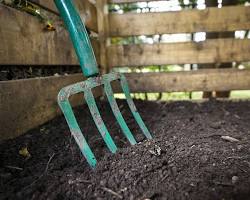
Maintaining Moisture Levels:
Moisture is crucial for microbial activity and proper decomposition. The ideal moisture level for a compost pile is similar to that of a wrung-out sponge. If the pile is too dry, add water; if it's too wet, add dry browns, such as shredded leaves or wood chips.

Monitoring Temperature:
The temperature of your compost pile provides insights into the decomposition process. A healthy compost pile should reach temperatures between 100°F and 160°F. If the temperature is too low, add more nitrogen-rich materials. If it's too high, add more carbon-rich materials or turn the pile more frequently.

Addressing Common Composting Issues:
Several challenges can arise during the composting process. Here's how to address common issues:
- Pests: If pests, such as fruit flies or maggots, invade your compost pile, consider adding more dry browns, turning the pile more frequently, and avoiding adding meat, dairy products, or oily food.
- Odors: Unpleasant odors can indicate an imbalance in the compost pile. Ensure proper aeration, turn the pile more frequently, and add more dry browns if the pile is too wet.
- Slow Decomposition: Slow decomposition can be caused by an imbalance in the C:N ratio, insufficient moisture, or poor aeration. Adjust the C:N ratio, water the pile if needed, and turn the pile more frequently.
Harvesting Compost
As your compost pile matures, transforming organic waste into nutrient-rich soil amendment, the moment of harvest arrives. Recognizing when your compost is ready and harvesting it properly are essential steps in reaping the rewards of your composting efforts.
Determining Compost Readiness:
Several indicators signal that your compost is ready to be harvested. These include:
- Appearance: Mature compost resembles dark, crumbly soil with a pleasant earthy aroma.

- Texture: When squeezed in your hand, mature compost should feel moist but not soggy, and it should crumble easily.
- Temperature: The compost pile's temperature should have cooled down to near ambient temperature.
- Time: Depending on the composting method and materials used, compost typically matures within six to twelve months.
Sifting and Separation:
Once your compost is ready for harvest, it's time to sift it to separate the finished compost from any remaining uncomposted materials. Use a compost sifter or a wire mesh with appropriate spacing to sift the compost.
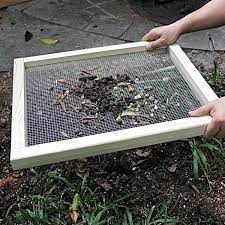
- Finished Compost: The finer particles that pass through the sifter or mesh represent the finished compost, ready to be used in your garden or potting mix.
- Uncomposted Materials: Larger pieces that remain in the sifter or mesh require further composting. Return them to the compost pile or start a new pile.
Storing and Using Compost:
Proper storage and use of compost ensure that its nutrient-rich properties remain intact. Store finished compost in a covered bin or container to prevent moisture loss and protect from pests.
- Garden Use: Apply compost directly to your garden soil, incorporating it into the top few inches of soil. Compost can also be used as a top dressing around plants or mixed into potting soil.
- Lawn Care: Spread compost evenly over your lawn, topdressing it at a rate of ¼ to ½ inch thick. Compost helps improve soil structure, water retention, and nutrient content for a healthier lawn.
- Potting Mix: Mix compost with potting soil to enhance nutrient content and drainage for container plants. Compost also promotes healthy root development and plant growth.
Remember, the quality of your compost depends on the materials you add, the proper balance of carbon and nitrogen, and the composting techniques you employ. By following these guidelines and harvesting your compost when it's ready, you'll reap the rewards of a nutrient-rich soil amendment that nourishes your plants and enriches your garden.
Troubleshooting Composting Challenges
As you embark on your composting journey, you may encounter challenges that can hinder the decomposition process or affect the quality of your compost. Here's a guide to troubleshooting common composting issues:
Excessive Moisture:
Excessive moisture can lead to slow decomposition, unpleasant odors, and the growth of anaerobic bacteria. To address this issue:
- Turn the pile more frequently: Aeration helps to dissipate excess moisture and prevent waterlogging.
- Add more dry browns: Dry materials, such as shredded leaves or wood chips, absorb moisture and help to balance the C:N ratio.
- Cover the pile: Covering the pile with a tarp or lid can help to retain moisture during dry periods, but ensure adequate ventilation to prevent anaerobic conditions.
Insufficient Aeration:
Insufficient aeration can slow down decomposition and create an environment favorable for anaerobic bacteria. To improve aeration:
- Turn the pile regularly: Turning the pile ensures that all materials are exposed to oxygen, promoting microbial activity.
- Use a coarser mesh: A compost bin with larger mesh openings allows for better air circulation.
- Add dry browns: Dry materials create air pockets within the compost pile, improving aeration and drainage.
Nutrient Imbalances:
Nutrient imbalances can affect the decomposition rate and the quality of the compost. To address nutrient imbalances:
- Adjust the C:N ratio: A balanced C:N ratio ensures that microorganisms have the necessary energy (carbon) and nutrients (nitrogen) for decomposition.
- Add more nitrogen-rich materials: If the C:N ratio is too high, add more nitrogen-rich materials, such as food scraps or fresh grass clippings.
- Add more carbon-rich materials: If the C:N ratio is too low, add more carbon-rich materials, such as dry leaves or wood chips.
Pests:
Pests, such as fruit flies or maggots, can be attracted to compost piles. To discourage pests:
- Avoid adding meat, dairy products, or oily food: These attractants can draw pests to the compost pile.
- Turn the pile more frequently: Turning the pile disrupts the breeding environment for pests.
- Cover the pile: A covering can help to keep pests at bay.
Odors:
Unpleasant odors can arise from an imbalance in the compost pile or from anaerobic conditions. To eliminate odors:
- Turn the pile more frequently: Aeration helps to dissipate unpleasant odors.
- Add more dry browns: Dry materials absorb excess moisture and help to balance the C:N ratio, reducing odors.
- Cover the pile partially: Covering the pile can help retain moisture, but avoid complete coverage to prevent anaerobic conditions.
Slow Decomposition:
Slow decomposition can be caused by various factors, including nutrient imbalances, insufficient aeration, or inadequate moisture. To address slow decomposition:
- Adjust the C:N ratio: A balanced C:N ratio ensures that microorganisms have the necessary resources for decomposition.
- Turn the pile more frequently: Aeration promotes microbial activity and speeds up decomposition.
- Maintain optimal moisture levels: The compost pile should be moist but not soggy. Add dry browns if it's too wet or water if it's too dry.
By understanding the causes of common composting challenges and implementing appropriate solutions, you can ensure that your compost pile remains healthy, produces high-quality compost, and contributes to your sustainable gardening practices.
Final Thoughts
As you embark on your composting journey, remember that you are not just transforming waste into a valuable resource; you are also embarking on a path of sustainability. By embracing composting, you are reducing your environmental impact, enriching your garden, and contributing to a healthier planet.
The benefits of composting extend far beyond simply reducing landfill waste. Composting produces nutrient-rich compost that enhances soil health, improves plant growth, and reduces reliance on chemical fertilizers. It's a natural and eco-friendly solution that nourishes your garden and enriches the environment.
As you construct your compost bin, consider your available space, composting style, and the type of materials you'll be adding. Whether you choose an open-air bin, a compost tumbler, or a vermicomposting system, ensure that your bin provides adequate aeration, drainage, and accessibility.
The success of your composting efforts hinges on maintaining a balanced carbon-nitrogen ratio, selecting suitable composting materials, and turning the compost pile regularly. By understanding the composting process and addressing common challenges, you can produce high-quality compost that will transform your garden and minimize your environmental impact.
As you harvest your compost, marvel at the transformation that has taken place. Once organic waste, now nutrient-rich soil amendment, ready to nourish your plants and enrich your garden. Embrace the satisfaction of creating something valuable from what others discard, knowing that you are making a positive impact on the environment.
So, take the first step today and embark on your composting journey. Construct your compost bin, gather your materials, and begin transforming waste into wealth. With a little care and attention, you'll soon be reaping the rewards of your composting efforts, enjoying a healthier garden and a more sustainable lifestyle.